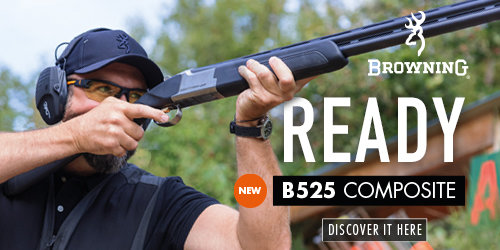Search the Community
Showing results for tags 'review'.
-
Hi anyone using or used the Bora BR99 and the Webley Web Tac 12g semi got the choice of either but the Web Tac has 3 yrs warranty both in the same price range, or anyone got one for sale, I am using at the club and on farm.Thanks.
-
A subscriber called Bjørnar Amundsen sent me this skinning knife. This is my review
-
Those of you who caught my review of the 21st century primertool will know that I loved it for its depth adjustability and build quality. Today I'm comparing it to the all-metal Benchrest Stainless Steel version: The "normal" 21stcenturyshooting.com primer tool - nothing normal about it; I think it's awesome: I really liked the way it uses the old round Lee trays not the silly new Lee square trays whose covers break at the corners. Yet with that you are still using normal shellholders andplastic-dependant alignment ie. the priming rod comes up through the plastic tray and pushes the primer into the brass which is being held by the shellholder. If the plastic tray is wornor isn’t perfectly aligned and the shellholder is a bit sloppy, or either partflexes, then a tight primer can go in askew or to an inconsistent depth. It’s way way better, stronger and more adjustable than normal but it still has these inherent issues. I use to poo poo such thinking in that all my primers wentin just fine and I didn’t see it as a problem. Oddly enough, I have recently had a lot of troubles getting large rifleprimers to seat uniformly in 284. Eventhough the primer pockets were reamed out uniformly the preferred Federal 210s often needed checking to check they weren’t crushed or tilted or both. This is due to the shellholder allowing thebrass to tilt slightly under force. The plastic gives slightly under force and misalignment can occur. The benchrest version of the primer tool from 21stcenturyshooting is completely metal and built like a Swiss watch. Indeed, like a Swiss watch, you might well pass this down to your grandchildren. It’s a beautiful thing Essentially the topunscrews, allowing one to swap the precision shellholder for another. Directly below that is the priming rod assembly which you swap between small and large for small and large primers. The machining on all this is sublime. Then the top cap screws back on and is notched as it tightens so that each click is 2.5thou. One can therefore exactly standardise the depth of the primer seating. Whatever depth you select, the shellholder turns to the angle you want for smooth insertion of the case. There is zero flex anywhere so it feels absolutely lovely and perfectly consistent. Where the priming rod pushes up into the case everything that aligns is metal and very tight – there can be no misalignment. What was a huge surprise was single-feeding theprimers. I really thought this would beso slow and fiddly. It turns out it is actually probably faster overall than trays and is a pleasure to do, and you do not realise how much you were worrying about the whole tray of primers going off until you’re only handling one at a time and there’s no risk any more. Yes, incredibly the placing of the primer into the little slot on the tool is a pleasure – it fits just so sweetly. (Above picture - No slop or flex possible there!) There is no worrying about the how many you need and counting them out, holding the angle of the tray just so, flipping the primersover, worrying about lids, getting them to feed….you just pop a single one in the slot in the top of the tool and squeeze it home. I never expected it but I’m not going back to trays. What a masterpiece of a reloading product and a pleasure to use every time. It is one of those products that you think you could do without until you use it. Then you realise that it offers rather significant advantages and just as importantly, turns a chore into a pleasurable task. Richard Utting Video review to follow on my SharpshootingUK YouTube channel
- 2 replies
-
- Review
- 21stcenturyshooting.com
- (and 5 more)
-
I finally decided that I’d have to turn my necks if I wanted to totally standardise my neck tensions and seating force. I’ve always been fussy about it but never felt the need to spend the money on all the neck turning kit as I was able to get good ES by being careful to monitor my seating force, lately becoming extremely fond of the K&M arbor press with the force dial indicator. Yet things get complicated when you start to add some brass flow in to the equation and donuts raise their ugly heads. Neck turning seemed the way to go to totally standardise my necks and solve my brass flow issues. I could also standardise my neck tensions between differing makes or lots of brass. I wanted a system that was fast, easy, precise and also cut into the shoulder. Everybody normally seemed to be worrying about how much to cut into the neck shoulder junction. I very much liked the idea of the cutter being angled just right so you could cut up the shoulder just so. I definitely wanted to use a power tool to do the feeding – turning a piece of metal with the variable speed of your wrist’s uneven turning motion? That seemed a very difficult proposition! I can barely chamfer a case neck evenly by hand so I didn’t fancy turning whole necks without even and controllable speed. I came to the 21stcentury turning tool because they are making some really progressive kit and their take on things is always worth considering. A look at the youtube videos and a chat with John there had me convinced that their turning tool mounted in their little lathe mount was the way to go. The cutter depth dial on the tool is easy to set up as it doesn’t have a locking nut that slows the adjustment process and creates backlash. There is a dial that means you can take note of exactly where it is when each calibre is set, making set up nexk time much quick and more precise. The floating mounting system of the lathe seemed to enable self-alignment and the ease and speed with which John was turning necks on the videos looked like magic! A few seconds to turn to a fifth of a thou? Just the ticket! The carbide cutter can be swapped for one that matches each calibre’s shoulder angle. This means you can just kiss the shoulder a mm or so and know that you’ve got that neck to shoulder junction clean again. Brass from inside the neck will flow into this new space and resolve any donuts that have built up. If you don’t think your 5x fired brass has donuts try dropping a long bullet into a fired case – you may be shocked! If you feel any resistance you need to solve the brass flow. The neck is supposed to be a tube, not a cone! My tool arrived from the states and I eagerly started expanding my brass with the expander mandrels. For novices such as myself, I’ll explain this: the turning process requires that the brass be at just the right size and the way to control this is to resize it with the turning tool manufacturer’s expander mandrel. This is simply a calibre-specific rod that fits in a die in your press in the normal manner. You quickly run the press and it sizes the necks just right for the turning process. Different calibre inserts fit in the same die in seconds so you only need one die for all your calibres. I couldn’t resist the super low friction titanium nitrite ones – they’re gold! Just as a calibre-specific rod is used in the expander die, one is also used in the turning tool. This guides the case on straight and is just the right size. Again I went for the cool gold one…. This is slid in and out during set up as it acts as a depth stop ie it controls how far down the neck and into the shoulder you can feed the cutter. Once this is set up using the lock nut and depth adjuster (allen key provided) you are good to go. The driver which you attach your drill to has a beautifully designed shell holder suspended from it. I say suspended as it is free to move in every direction so that it can self-centre. This is the real genius of this lathe set up from 21stcenturyshooting. The machining is sublime and the way the shellholder nips up by hand without harming the brass is just wonderfully done (there is an o-ring that gently binds to the case head) Changing to a different calibre shell holder does not take long. A driver for external use ( like annealing) is provided too: Then one simply attaches the drill and feeds the case on to the alignment arbor and into the turning tool. Controlling the speed with the drill, you turn the case. The shellholder and the tool both will self-align and become perfectly aligned. Note the rubber bushings allowing the tool to float: In a matter of seconds, you have a perfectly turned neck and the shoulder shaved at exactly the right angle. It is an absolute pleasure to do. I got bored of measuring the results – the results were frankly perfect. I was turning to 13.7 thou (0.0137”) and with my neck micrometer I could detect no variations from that whatsoever in dozens of cases. The tool can be tilted to any angle you fancy. Bottom screw is the angle and the top one is the length stop ie how much you cut into the shoulder Interestingly, when I loaded the brass and came to seat my heads, the level of consistency of the seating force was amazing – neck turning is a must! If you’re debating whether it is worth having to master a new process, spending money on other tools and probably cutting dangerously too far into your shoulder – fear not! The 21stcentury system makes it all totally straightforward to the point of being a pleasure even for the first-time turner such as myself and the potential pitfalls are avoided with ease. The results are certainly worthwhile too – your ES will improve no end and you don’t have to worry about donuts or variations between lots of cases. I haven’t compared this to other tools and I have no prior experience of neck turning. Obviously there are other tools that will do the job but from reading forum posts on the matter it is clearly a complicated process fraught with difficulty, inconsistency and frustration. What I can say about this 21st century kit is that it is not just a tool but a complete system for neck turning. You can buy this as a total newbie and it will give you absolutely premium performance - safely, quickly and easily - taking a daunting process and making it a pleasure. Richard Utting Video review to follow on my Sharpshootinguk YouTube channel
-
- Neck turning
- review
-
(and 2 more)
Tagged with:


